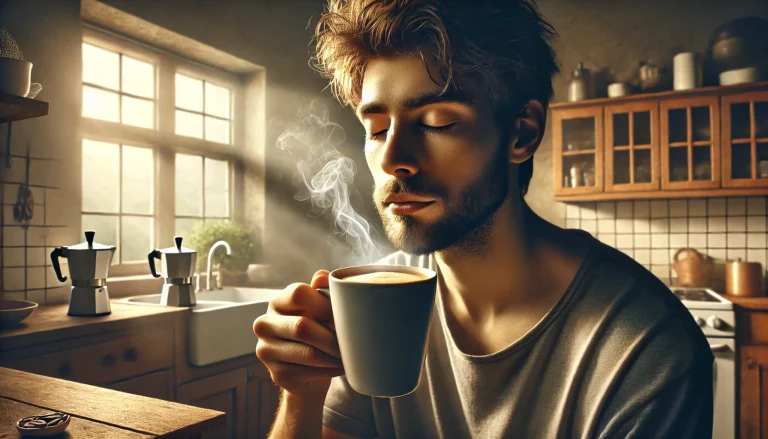
Have you ever brewed the same coffee beans at home — only to feel like they taste better when served in a cozy café?
You’re not imagining things. Coffee truly can taste better when enjoyed outside your home, and there’s a fascinating mix of science, psychology, and sensory design behind this everyday mystery.
In this article, we’ll explore why café coffee often seems superior, even when the brew is technically the same. From atmosphere to auditory influence, we’ll uncover how context shapes taste — and how your brain plays a starring role in every sip.
To understand why coffee tastes better in a café, we need to start with how taste actually works.
Flavor is not just a product of your tongue. It’s a multisensory experience made up of:
In other words, flavor lives in the brain, not just in your mouth. And the café environment optimizes many of these senses to enhance the experience.
The moment you step into a café, your brain begins interpreting the experience — and those interpretations influence how you perceive the taste of your coffee.
Ambiance elements include:
Studies show that food and drinks consumed in comfortable environments are rated as more flavorful, even when nothing changes in the ingredients.
That’s why even an average cappuccino can feel magical in the right setting.
When you sit down at a café and pay for a professionally made coffee, your brain expects it to taste better. That expectation influences how your brain processes the flavor.
It’s the same reason that:
This is known as confirmation bias — your brain actively looks for reasons to confirm what it believes. If you think café coffee will be good, you’re more likely to interpret each note of flavor as rich, smooth, and satisfying.
Drinking coffee at home is often functional — you’re trying to wake up or stay focused. But in a café, drinking coffee is more than a task. It’s a social or lifestyle event.
You might be:
This context creates emotional elevation, which enhances how we process taste.
Positive emotions (like relaxation, connection, or curiosity) activate the reward centers of the brain, making flavors feel more intense and enjoyable.
The human interaction in a café also contributes to the experience.
A barista:
These small gestures create a sense of care, service, and attention — which affects how you perceive what you’re drinking.
Psychological research has shown that when we receive food or drink prepared by someone else, it tastes better than when we prepare it ourselves. This is known as the “effort discounting” effect.
At home, you associate the drink with your own effort. In a café, it feels like a gift.
Believe it or not, sound affects how coffee tastes. Cafés often use background music that:
There’s even a field of study called neurogastronomy, which explores how sound frequency influences taste. High-pitched music makes drinks taste sweeter. Low-pitched tones enhance bitterness.
So that soft jazz or indie acoustic playlist in the café? It’s not just for vibe — it’s shaping your flavor perception, too.
How a drink is served plays a surprisingly big role in how it’s perceived.
Let’s compare:
| Cup Type | Perceived Taste |
|---|---|
| Paper cup | Convenient, but often less flavorful |
| Ceramic mug | Higher quality, smoother flavor |
| Glass | Clean, balanced, neutral |
| Stoneware | Earthy, comforting, richer tones |
Cafés often use heavy ceramic mugs with perfect dimensions — they hold warmth, signal quality, and allow you to savor.
Even color matters: warm tones (like brown, orange, or red) make drinks taste richer, while cool tones (like blue) can dampen flavor intensity.
At home, you may be drinking from a random mug — but in a café, the visual and tactile design has been optimized for taste.
Coffee in a café often feels like a treat — even if it’s a small one. That sense of reward actually heightens taste perception.
This is related to the dopamine response. When we do something enjoyable and out of the ordinary (like going out for a coffee break), the brain releases feel-good chemicals that make everything — including coffee — more pleasurable.
Compare that to drinking coffee at your desk, with emails piling up and notifications buzzing. The flavor may technically be the same, but the emotional and neurological context is completely different.
Even if you’re using the same beans at home, cafés introduce novelty:
These sensory shifts add micro-contrast, which makes your brain more alert and open to nuance.
When you’re at home and drinking the same cup every day, your brain filters out repeated stimuli — and your coffee can seem less exciting by comparison.
Absolutely — and many people try! Here’s how:
1. Upgrade your environment
2. Use better cups
3. Slow down the ritual
4. Serve it like a barista
Creating a ritualized, sensory-rich environment at home can close the gap between your kitchen and your favorite café — and bring intention into your everyday brew.
Next time you wonder why coffee tastes better when you’re out, remember this: it’s not just about the beans or the barista — it’s about the brain.
Taste is shaped by sight, sound, smell, emotion, and environment. The café enhances every one of these senses — turning a simple drink into a rich, layered experience.
But with awareness and creativity, you can bring that same sensory magic home — and enjoy your coffee with new appreciation, wherever you are.

Gabriel Rodrigues é especialista em finanças pessoais e escritor, com ampla experiência em economia, planejamento financeiro e gestão de recursos. Apaixonado por ajudar as pessoas a alcançarem sua saúde financeira, ele explora temas variados, desde investimentos até estratégias de poupança. Quando não está escrevendo, você pode encontrá-lo estudando novas tendências financeiras e oferecendo consultoria para quem busca melhorar sua relação com o dinheiro.